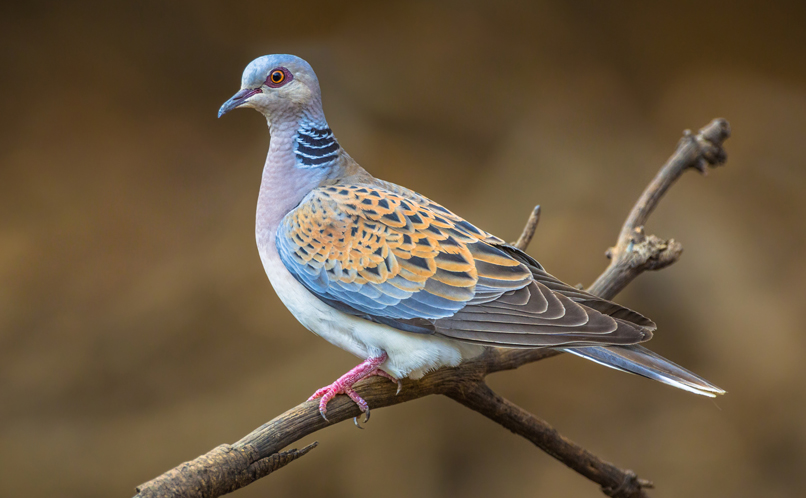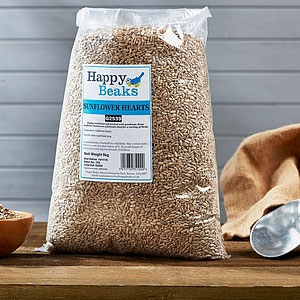
Turtle Dove Streptopelia turtur
Sadly, this dainty bird, the UK’s only summer migrant pigeon species, has seen a massive drop in numbers and now has red status. This decline is down to both changing farming practices, and drought in its African winter spots. Regardless, the scalloped pattern of the wings, and the purring song make this pretty little bird one of the quintessential parts of the British summer.
Identification
Slim with a long tail and intricately marked plumage, the scalloped pattern on the wings of the turtle dove is somewhat unmistakable. Look for dusty pink on the head, underparts and neck, with a black and white striped collar on both sides.
The turtle dove’s song is a repetitive, deep purr like sound, that is rhythmic too.
Feeding
The turtle dove is a seed eater, but specifically likes to eat weed seeds. The use of pesticides to kill such weeds may be a reason for turtle dove decline. Offering small bird seeds and grains can only improve your chances of attracting this pretty bird.
Breeding
Between May and August, the turtle dove breeds. Its nest is made from sticks, and its eggs are white. Laying just 1 or 2 of these eggs, the turtle dove will then incubate them for 13-14 days, with the young fledging after 21 days.
Did you know?
If you added up all the turtle doves in the Christmas carol “The Twelve Days of Christmas”, you’d have 22 in total.
Often mistaken with...
The collared dove does look similar, however the turtle dove is smaller, and if you are in doubt, look at the gait. The turtle dove’s small legs give it a very horizontal look when walking.
Perfect for the Turtle Dove...
5 Options From £7.95
No Husk No Grow No Waste Wild Bird Seed Mix
5 Options From £9.45
5 Options From £14.95
Kingfisher Pewter Effect Lantern Seed Feeder
Just £14.99





